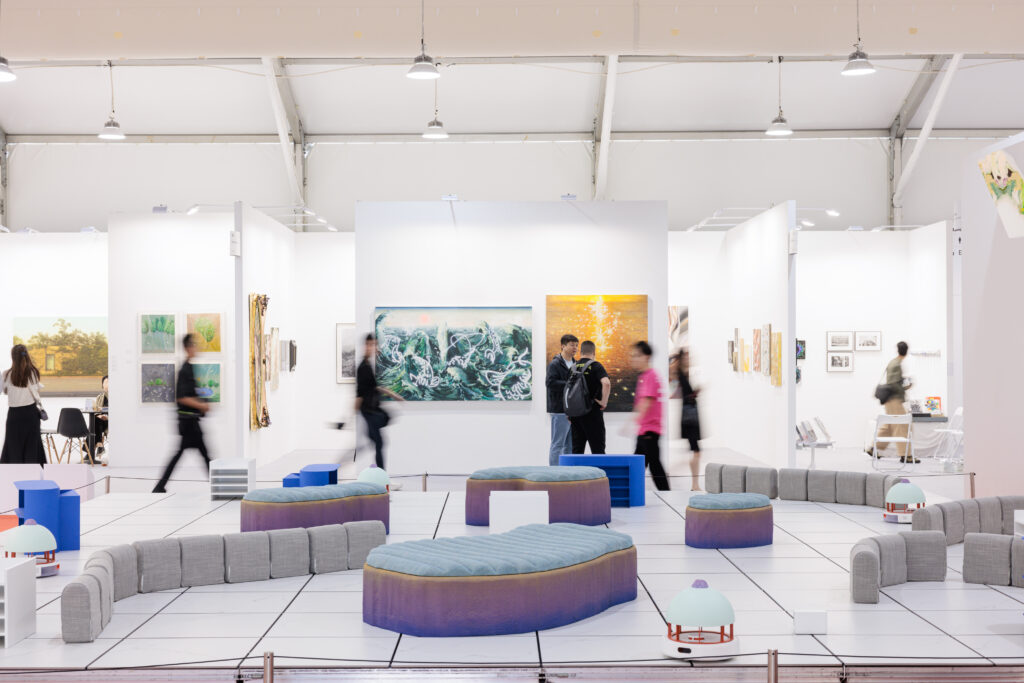Nadim Abbas
A Brazen Rift (After Branzi), 2025
Commissioned Installation
For Art Central 2025, Hong Kong artist Nadim Abbas will unveil A Brazen Rift (After Branzi) (2025), a newly commissioned large-scale installation.
Architectural drawings, as a medium, face the future. They divine possibilities while grounding themselves in the present. They are a call to respond—rooted in the responsibility architects hold as makers of space, to the future of the environments they shape.
In the 1960s, Andrea Branzi of Archizoom Association was one such architect who augured a radical future. Responding to the rigid frameworks of modernist architecture, he postulated decentralized, imaginative cities that evoked cellular organisms. His drawings became proposals for alternatives to urban life as we know it.
At the heart of Abbas’s two-decade-long practice is an interrogation of the image in an age of its omnipresence. Using modular forms, Abbas frees, interrogates, and reworks Branzi’s two-dimensional visions, breathing new life into their ambitious eukaryotic structures. The site-specific installation draws parallels between the movement of people in densely populated urban centers and the kinetic energy of crowds within an art fair.
Aaditya Sathish
Curator

Nadim Abbas explores the mercurial nature of images and their ambiguous relationship to reality. This has culminated in the construction of complex set pieces, where objects disappear into their own semblance and bodies succumb to the seduction of space.
Abbas’ work first developed out of a fascination with optical phenomena, mirroring and the creation of immersive theatrical scenarios. These often touched on the issue of location and how that might structure a dialogue with the notion of something being real yet an image but also a simulacrum of the real. Wary of a purely “retinal” or illusion-based reading of his work, he would allow elements of inconsistency to show through, in a bid to let the mechanisms of construction unfold before the viewer.
These preoccupations with the phenomenological intricacies of visual experience would later shift towards a wider inquiry into technologies of perception. Referencing a diverse range of subjects, from bunker archaeology to otaku subcultures, Abbas instils generic forms with unfamiliar associations, in an attempt to describe the “invisible violences” that permeate seemingly innocuous facets of everyday life.


